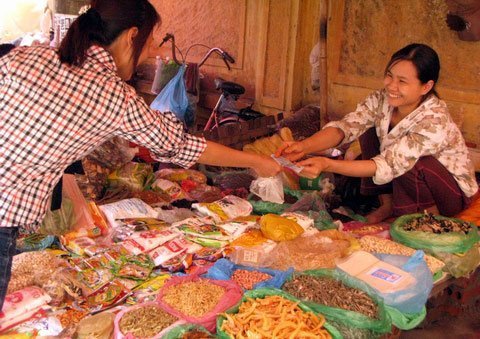VietNamNet Bridge – Hanoians believe that supermarkets are not the “markets”
that they have got familiar for the last hundreds of years. If so, Hanoi would
no longer have markets from 2030, since the city’s authorities are planning to
restructure the wholesale and retail networks in Hanoi and remove traditional
markets.

In the inner city’s area, including the Hoan Kiem, Ba Dinh, Dong Da, Hai Ba
Trung and a part of Tay Ho district, the existing supermarkets would be upgraded
with the city’s budget, while new hypermarkets, second and third class
supermarkets would be built on the areas where there are traditional markets or
production bases and offices and commercial areas.
The city plans to upgrade the existing supermarkets, while preserving the
existing hypermarkets and second and third class supermarkets in the areas from
the belt No. 2 to Nhue River, the southern part of the Red River, which includes
the districts of Tay Ho, Cau Giay, Thanh Xuan, Hoang Mai, and a part of Tu Liem
and Thanh Tri districts.
In general, only hypermarkets, second and third class supermarkets, or modern
distribution channels, would be existing in Hanoi, which is a part of the plan
to develop Hanoi into a modern capital city. Meanwhile, traditional markets
would disappear gradually.
The information has surprised many Hanoians, who love traditional markets,
considering traditional markets as a part of their life. In the thoughts of many
city’s dwellers, especially old people, “market” means the traditional market
which has been existing for the last hundreds of years, while supermarket must
not be called “market.”
The plan on renovating the market network in Hanoi has not been applauded by
people and culturists, who believe that traditional market is not simply the
place where goods are exchanged, but also the cultural beauty of Vietnamese
people. Therefore, it is necessary to maintain them and upgrade the value of
traditional markets instead of removing the markets and replacing with modern
supermarkets.
According to the Ministry of Industry and Trade, there are 8500 traditional
markets nationwide, including 411 in Hanoi. As such, there are 14 markets in
every district or town, while each of the markets serves some 15,000 people.
Currently, 50 percent of fruits and vegetables are sold at traditional markets,
while the products of the same kinds available at supermarkets just serve 5
percent of the total demand.
Dr Hoang Tho Xuan from the Trade Research Institute also said that Vietnamese
people like going to traditional markets because they want fresh, cheap and
diversified products. Traditional market serves as the distribution channel for
farm produce and fresh food which has been playing a very important role in the
life of poor consumers.
However, the existence of traditional markets proves to be contradictory to the
city’s plan to become a modern urban area, while they cannot satisfy the
requirements on food hygiene and commercial civilization.
In fact, Hanoi has been trying to build up modern distribution networks to
replace the degrading traditional markets. Modern markets and shopping malls
have been set up, but they have not attracted consumers. Many of them have been
left idle. This shows that traditional market still has its important
significance to the majority of people.
Source: VnMedia, KT&DT
- © Copyright of Vietnamnet Global.
- Tel: 024 3772 7988 Fax: (024) 37722734
- Email: evnn@vietnamnet.vn